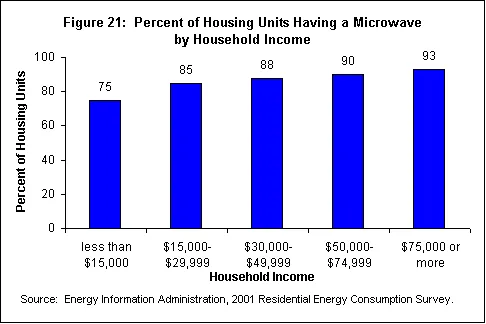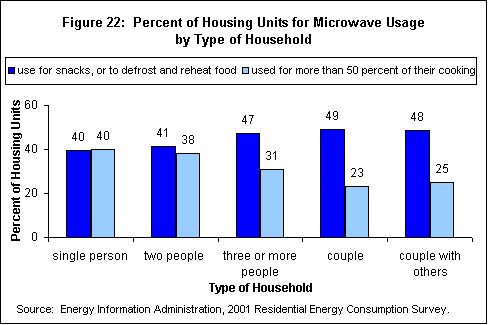Designer Kitchens and the People Who Don’t Cook in Them
From designer appliances to bigger floorplans, Americans love kitchens, just not cooking in them
/https://tf-cmsv2-smithsonianmag-media.s3.amazonaws.com/filer/20121017015058Pantry_Thumbnail.png)
![]()

Who hasn’t imagined the things she could do with a larger kitchen and more storage and then imagined taunting her friends about it? Photo by Department of Agriculture, 1946. Courtesy US National Archives
Search “kitchens” on Pinterest and you’ll find rows of pictures of gleaming marble, rustic country tables and the smooth, taut surfaces of various fruits. Actually, don’t do this–seriously, it’s a trap, you’ll never leave. Worse yet, you’ll fall victim to “designer kitchens fever” and start demanding upgrades for everything that isn’t stainless steel. Reporting on the epidemic, NPR cited the picky consumer on shows like HGTV’s House Hunters who insists that dated cabinets mean the house is not “move-in ready.” State-of-the-art ovens are de rigueur for young couples looking to set the stage for grown up life.

“KITCHENS” on Pinterest. Not safe for work unless, of course, your boss is cool with you not doing work for several hours.
But actually using that oven? Well, that’s another story. Despite the proliferation of cooking shows and foodie films, Americans aren’t so hot on actually cooking. Across income, there is a steady trend away from the kitchen as wealth rises. According to the Energy Information Administration’s 2009 Residential Energy Consumption Survey, which uses a sample of more than 12,000 households, 27.5 million Americans enjoy two hot, home-cooked meals every day. Break it down by income, however, and only 2.4 percent of those with a household income of $120,000 or greater report the same. Meanwhile, 6.6 percent of households making less than $20,000 partake in cooking two hot meals every day.
When author Tracie McMillan began researching her book, The American Way of Eating, she wanted to answer the question: if cooking with raw ingredients is supposed to be so cheap and good, why don’t more people do it, particularly low income families? Writing for Slate, McMillan concluded:
We tend to think that low-income Americans are flooding McDonald’s, while more affluent citizens dutifully eat better meals prepared at home. In reality, it is the middle class that patronizes the Golden Arches and its competitors. (That’s because fast food may be cheap, but it’s still more expensive than cooking at home.) Indeed, beneficiaries of the Agriculture Department’s food-stamp program (officially known as Supplemental Nutrition Assistance Program, or SNAP) typically spend far more time than other Americans preparing their meals. (This trend may shift in the future, as some states have begun allowing some subsets of SNAP recipients to redeem their food stamps for fast-food meals.)
Indeed, going out for meals has become more popular over the years. NPR reports, “48 percent of the money spent on food in the U.S. today goes to a restaurant, while in 1955, only a quarter of every food dollar was spent in restaurants.”
If it’s the middle and higher-income brackets dining out with such gusto, why, then, does the need for fancy, expensive kitchens continue? It turns out, all many Americans really require is a microwave and a coffeemaker.
A substantial 26.5 million Americans (just under 10 percent) said they used microwaves for “most meals and snacks.” Meanwhile 72 million Americans (roughly a quarter of Americans at the time of the survey) have a coffee maker. Usage of both, according to data from a 2001 survey, remained fairly consistent across types of households, whether it be single person or family. But when it came to using the microwave for 50 percent or more of the household cooking (indicated by the light blue bar), people living alone relied on the microwave most heavily, while couples relied on the appliance the least.

As shown below, no matter the size of the household, somewhere around 65 percent of respondents said they use a coffee maker daily or at least several times a week.
We all enjoy coffee and we all enjoy microwaves. Whether or not we cook, we seem to all enjoy fancy kitchens, too. HGTV even provided a how-to for getting the most out of your $70,000 kitchen makeover.
Even after the recession weakened demand for top-of-the-line appliances, consumers are still calling for larger kitchens, according to Realtor Magazine. Of course, they still don’t really seem to want to cook in them. Instead, “As kitchens get bigger, special function areas are expected to continue to be popular, such as recycling centers, larger pantry spaces, recharging stations for electronic devices, and integration of kitchens with family living space.”
The article goes on to say that kitchens will remain the gathering place of the house though its function might have less to do cooking. And what modern romantic comedy would be complete without spotlessly beautiful marble countertops? After all, anything less is simply not “move-in ready.”
Search “kitchens” on Pinterest and you’ll find rows of pictures of gleaming marble, rustic country tables and the smooth, taut surfaces of various fruits. Actually, don’t do this–seriously, it’s a trap, you’ll never leave. Worse yet, you’ll fall victim to “designer kitchens fever” and start demanding upgrades for everything that isn’t stainless steel. Reporting on the epidemic, NPR cited the picky consumer on shows like HGTV’s House Hunters who insists that dated cabinets mean the house is not “move-in ready.” State-of-the-art ovens are de rigueur for young couples looking to set the stage for grown up life.

But actually using that oven? Well, that’s another story. Despite the proliferation of cooking shows and foodie films, Americans aren’t so hot on actually cooking. Across income, there is a steady trend away from the kitchen as wealth rises. According to the Energy Information Administration’s 2009 Residential Energy Consumption Survey, which uses a sample of more than 12,000 households, 27.5 million Americans enjoy two hot, home-cooked meals every day. Break it down by income, however, and only 2.4 percent of those with a household income of $120,000 or greater report the same. Meanwhile, 6.6 percent of households making less than $20,000 partake in cooking two hot meals every day.
When author Tracie McMillan began researching her book, The American Way of Eating, she wanted to answer the question: if cooking with raw ingredients is supposed to be so cheap and good, why don’t more people do it, particularly low income families? Writing for Slate, McMillan concluded:
We tend to think that low-income Americans are flooding McDonald’s, while more affluent citizens dutifully eat better meals prepared at home. In reality, it is the middle class that patronizes the Golden Arches and its competitors. (That’s because fast food may be cheap, but it’s still more expensive than cooking at home.) Indeed, beneficiaries of the Agriculture Department’s food-stamp program (officially known as Supplemental Nutrition Assistance Program, or SNAP) typically spend far more time than other Americans preparing their meals. (This trend may shift in the future, as some states have begun allowing some subsets of SNAP recipients to redeem their food stamps for fast-food meals.)
Indeed, going out for meals has become more popular over the years. NPR reports, “48 percent of the money spent on food in the U.S. today goes to a restaurant, while in 1955, only a quarter of every food dollar was spent in restaurants.”
If it’s the middle and higher-income brackets dining out with such gusto, why, then, does the need for fancy, expensive kitchens continue? It turns out, all many Americans really require is a microwave and a coffeemaker.

A substantial 26.5 million Americans (just under 10 percent) said they used microwaves for “most meals and snacks.” Meanwhile 72 million Americans (roughly a quarter of Americans at the time of the survey) have a coffee maker. Usage of both, according to data from a 2001 survey, remained fairly consistent across types of households, whether it be single person or family. But when it came to using the microwave for 50 percent or more of the household cooking (indicated by the light blue bar), people living alone relied on the microwave most heavily, while couples relied on the appliance the least.

As shown below, no matter the size of the household, somewhere around 65 percent of respondents said they use a coffee maker daily or at least several times a week.

We all enjoy coffee and we all enjoy microwaves. Whether or not we cook, we seem to all enjoy fancy kitchens, too. HGTV even provided a how-to for getting the most out of your $70,000 kitchen makeover.
Even after the recession weakened demand for top-of-the-line appliances, consumers are still calling for larger kitchens, according to Realtor Magazine. Of course, they still don’t really seem to want to cook in them. Instead, “As kitchens get bigger, special function areas are expected to continue to be popular, such as recycling centers, larger pantry spaces, recharging stations for electronic devices, and integration of kitchens with family living space.”
The article goes on to say that kitchens will remain the gathering place of the house though its function might have less to do cooking. And what modern romantic comedy would be complete without spotlessly beautiful marble countertops? After all, anything less is simply not “move-in ready.”
/https://tf-cmsv2-smithsonianmag-media.s3.amazonaws.com/accounts/headshot/Leah-Binkovitz-240.jpg)


/https://tf-cmsv2-smithsonianmag-media.s3.amazonaws.com/accounts/headshot/Leah-Binkovitz-240.jpg)